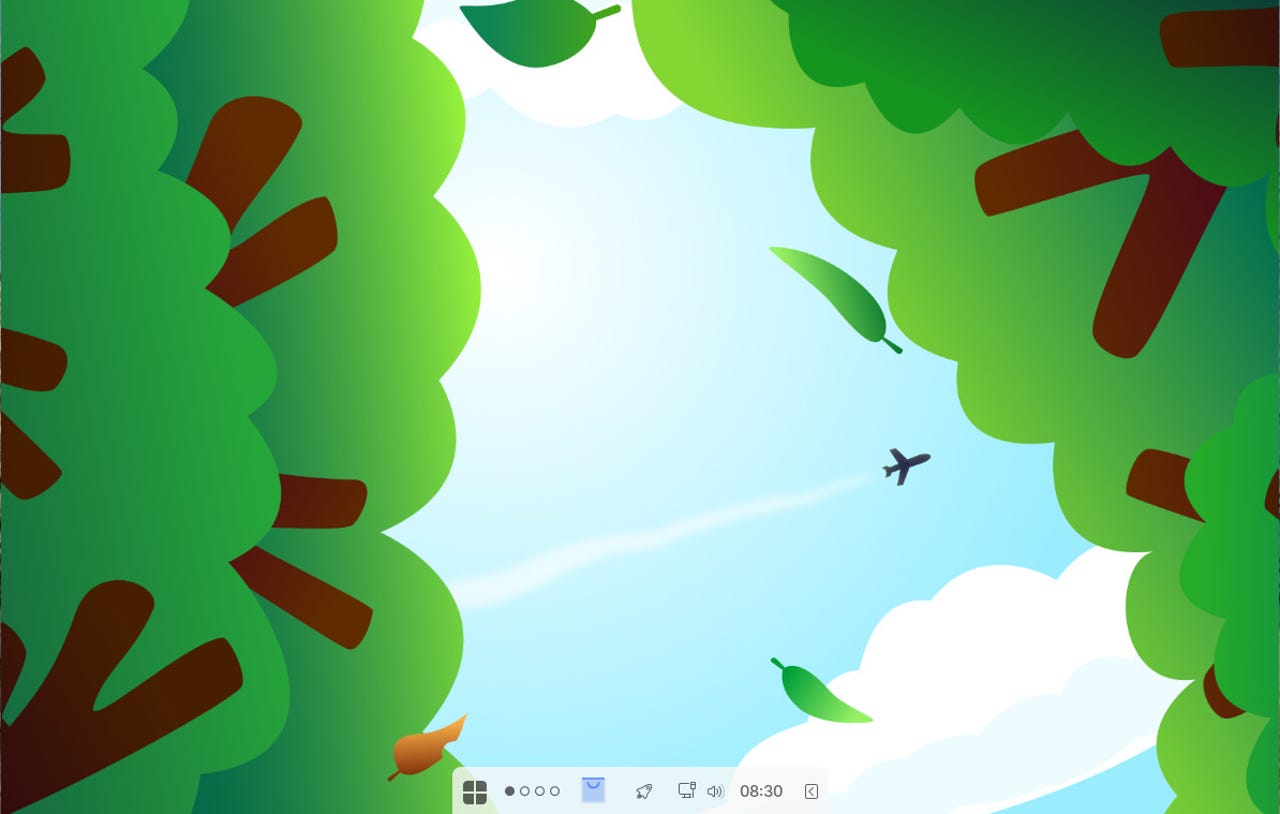
































It took me a couple of minutes to have Ultramarine Linux Flagship looking and behaving exactly how I wanted.
I always enjoy seeing how different Linux distributions shape and mold desktop environments into something completely different. Take, for instance, Ultra Marine Linux' Flagship distribution. I've been using Ubuntu Budgie for some time now and am used to how Budgie looks and feels. So, when I installed Ultramarine Linux Flagship distribution, I assumed there'd be no surprises.
I was wrong.
Also: This is my new favorite default email client for Linux
Out of the box, the desktop defaulted to a darker theme with a fairly traditional layout. With just a few tweaks (thataren't found in Ubuntu Budgie), I had Ultramarine Linux Flagship looking quite nice. Although some of the tweaks took a bit of investigating (such as getting the App Launcher exactly how I wanted it), for the most part, they were all quite easy.
I'd go so far as to say that Ultramarine Linux Flagship will very likely become my default Linux distribution the next time it comes to installing a new OS.
But whatisUltramarine Linux Flagship? First off, Ultramarine Linux comes in a few different flavors (one of which is called Flagship - which uses the Budgie desktop environment. These flavors are:
All four editions can be downloaded from the official download page and installed on off-the-shelf hardware or as a virtual machine.
Also: If you want to try BSD, GhostBSD might be your best bet
Ultramarine Linux is a "spiritual successor" to Korora Linux, with the goal of distributing a version of Linux that "just works." Based on Fedora Linux, Ultramarine Linux offers far more customizations than the out-of-the-box Fedora distribution. One big difference is that US patents restrict the downloading and use of certain applications on Fedora out of the box.
Given that Ultramarine hails from Thailand, those limitations do not apply. What does that mean? Mostly, there are apps (such as media codecs for playing certain file types) that "just work" and do not require the user to download and install third-party software to get things likeMP3s and M4V/MP4 files to play correctly.
Like Fedora, Ultramarine Linux also ships with Flatpak installed and integrated into the Software GUI app. However,like Fedora, when you run an update, it often is only applied once you restart the operating system (depending on what is updated).
Also: 7 things even new Linux users can do to better secure the OS
So, after a bit of tweaking, I had a desktop that I was perfectly pleased with.
How did I get there? Very simple. With a right-click of the desktop, I selected Budgie Desktop Settings. In the Desktop Settings window, I changed the following:
You might notice there's no Background setting here. That's because it's found in System Settings.
Once I had it to my liking, I had to then add apps to the App Launcher. To do that, open the App launcher and click the pencil icon to open the edit window. From there, I simply had to select all the apps I wanted to include and then click Apply.
The App Launcher can be thought of as a paired-down version of the MacOS Launch Pad.
Keep in mind, I'm running Ultramarine Linux as a virtual machine with only 3GB of RAM. You would think the desktop would be a bit sluggish but it performed far above my expectations. And since I'm already accustomed to the stability of Budgie, I was not even remotely surprised at how well Ultramarine Linux Flagship behaved. There were no surprises, no problems, and plenty of speed.
Also: Linux might be your best bet for heightening your desktop computer security
Ultimately, however, the best thing I can say is that the Ultramarine Linux Flagship edition impressed me enough to make me want to switch from Ubuntu Budgie. It'sthat good. Although, when it does become my go-to, I'll probably add a top panel (for things like the clock and notifications). With just a few simple configurations, the desktop perfectly suits my needs (and aesthetics).
If you're looking for a new Linux distribution (or a new OS in general), I would highly recommend Ultramarine Linux Flagship.
 Hot Tags :
Tech
Hot Tags :
Tech